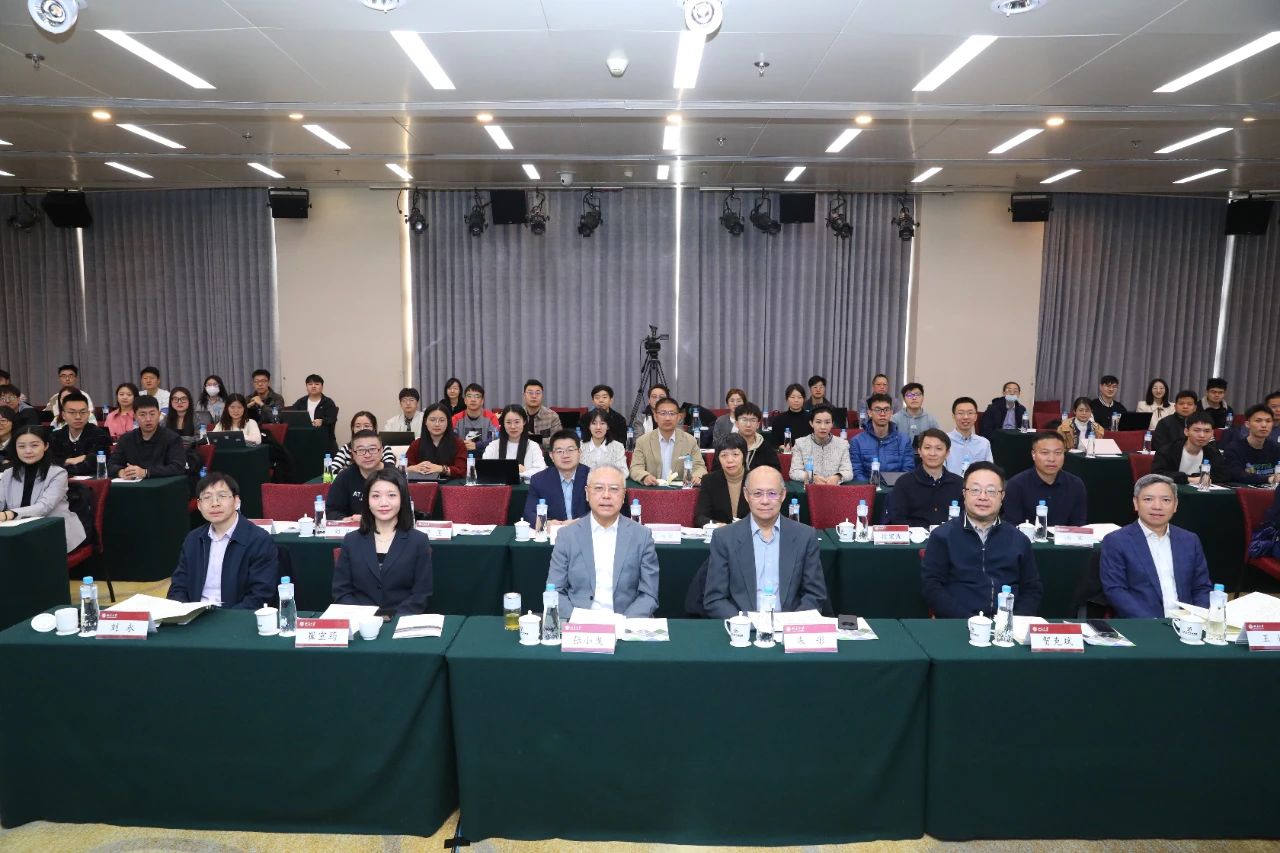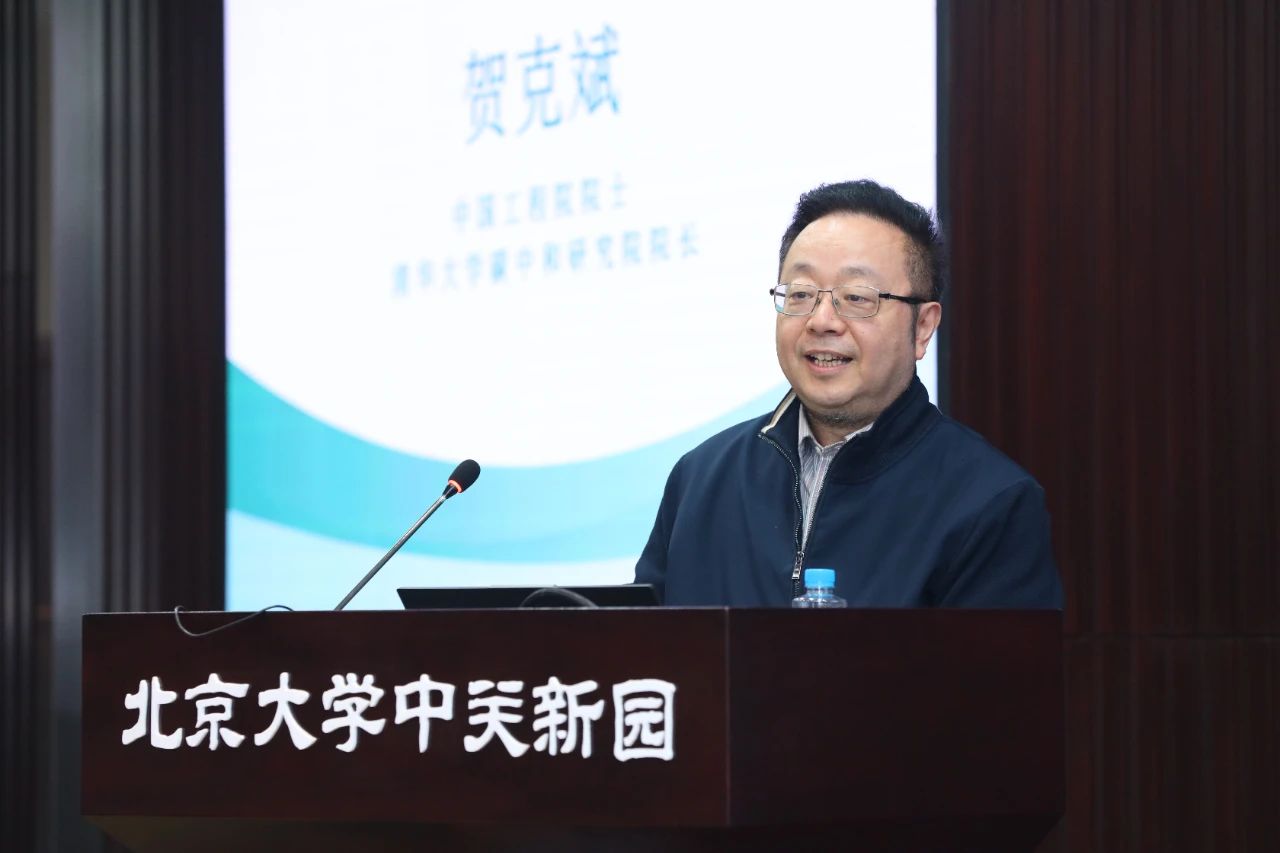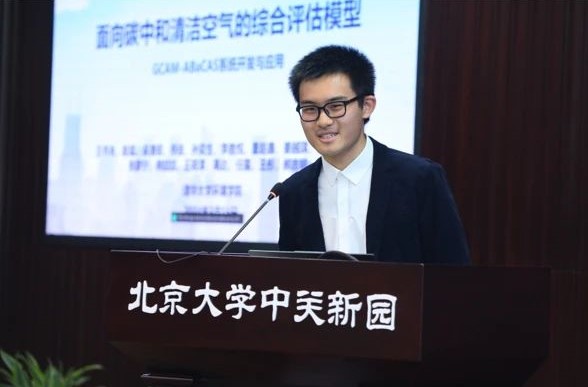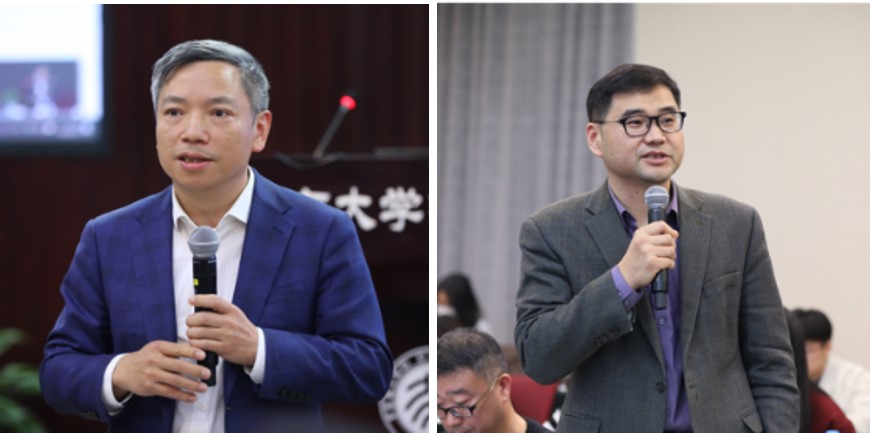On March 15, College of Environmental Sciences and Engineering at Peking University, Institute for Carbon Neutrality (ICON) at Tsinghua University, and the Center for Global Sustainability at the University of Maryland jointly developed and open-sourced the GCAM-China-v6, an integrated assessment model for climate change, based on over a decade of research. Attendees of the launch event include He Kebin, Academician of the Chinese Academy of Engineering, Dean of ICON, and Professor at the Tsinghua School of Environment (SOE), Wang Can, Chairman of SOE School Council and Professor at the School of Environment, Lu Xi, Assistant Dean of ICON and Professor at SOE, and Sun Yisheng, a SOE doctoral student.

Group photo of the attendees
At the event, the research team systematically introduced the background, current research status, main functions, and learning resources of the integrated assessment model. Experts and scholars from over a dozen domestic universities, research institutions, and enterprises attended the event, where they discussed the model’s functions, improvements, and applications in policy-making. The open-source GCAM-China-v6 serves as a crucial foundational research and decision-support tool for comprehensively analyzing the interactions between China's natural environmental climate system and human socio-economic energy system.
In his speech, He Kebin discussed the driving forces, evolution, and impacts of climate change from the perspective of complex systems analysis. He emphasized that to address the unique challenges facing China and implement the Beautiful China Initiative, there is an urgent need for data, tools, and criteria to quantitatively analyze the interactions among various factors such as the environment, resources, and health.

Speech by He Kebin
Sun Yisheng demonstrated the integrated assessment methods aimed at carbon neutrality and clean air goals and their applications, highlighting the critical role of cross-disciplinary approaches in achieving climate change objectives.

Sun Yisheng introduces the application achievements of the GCAM model
Experts and scholars such as Wang Can and Lu Xi engaged in in-depth discussions on the development and application of the GCAM-China model, the overall growth of the model community, and interdisciplinary integration. The experts attending the event emphasized that the ongoing development and refinement of the model require broader participation from academic and technical experts, particularly in its application at the local level, which should incorporate Chinese characteristics. At the same time, they emphasized the special significance of U.S.-China civil exchanges and cooperation amidst the increasingly complex international environment. They also discussed the potential expansion of the model in international politics and economic development patterns in the future. They called for enhancing the robustness and application scope of the model through comparative modeling and uncertainty assessment. This would support climate policy formulation and contribute Chinese wisdom and solutions to global climate governance.

Wang Can and Lu Xi give talks in the review and discussion session
The Global Change Analysis Model (GCAM) aims to quantitatively simulate the inter linkages and interactions between natural environmental systems, energy-economic systems, and social systems. It effectively addresses the limitations of discipline-specific research methods in comprehensively analyzing the impacts of green transition policies such as carbon neutrality. GCAM is one of the flagship integrated assessment models of the IPCC and serves as a foundational model within the RCP-SSP scenario framework. The global version of GCAM has been developed and maintained by the Pacific Northwest National Laboratory (PNNL) in the United States for over fifty years. The GCAM-China version, nested within the global framework, additionally incorporates economic and energy systems at the provincial level in China. Alongside the open-source release of the model, the development team is actively exploring future management modes for the open-source model community. They have preliminarily established an organizational structure comprising an Expert Advisory Committee, a Model Development Committee, and Model Learning and Application Groups. We warmly welcome more experts, scholars, and young students to join us in building the open-source model community together.
Source: College of Environmental Sciences and Engineering, Peking University





